- Home
- Patrick Robinson
The Shark Mutiny Page 28
The Shark Mutiny Read online
Page 28
“Sounds like a particularly ambitious plan,” said Harcourt Travis, “since we’re dealing with a nation that has just stood the world on its head, and apparently has no qualms about wrecking economies and then going to war.”
“It is an ambitious plan,” said Admiral Morgan. “And it’s a plan that I like a lot for two reasons. First of all, because it involves a large amount of dynamite, and second of all because it will create a multitude of hugely pissed off Chinamen.”
“I like it, too,” said the President. “Don’t know what it is, but I like it.”
The meeting continued for the rest of the morning, and still made no headway with regard to military discouragement of China. It was agreed the State Department would send the most strongly worded communiqué to the Beijing government “deploring in the extreme the vicious military action undertaken this week by China against their peace-loving neighbors, an independent state now recognized by the United Nations.”
Harcourt Travis pointed out that no civilized single country had undertaken any such unprovoked action in the past quarter of a century, save for Serbia, and earlier Argentina against the Falkland Islands. In Harcourt’s opinion the Chinese would do well to take note of the fate that befell the leaders of those countries, and would be advised to cease and desist in this totally unwarranted bullying of a small island neighbor.
He did not anticipate a reply, nor did he get one.
Travis had been reluctant to put American threats of any kind into writing, and that afternoon Admiral Morgan had the Chinese ambassador brought in to answer some hard, searching questions. But the ambassador merely stalled and said that China was simply answering a request from the Taiwan government “to stabilize the situation in their country, with a view to normalizing relations with the mainland, which would be in everyone’s interest.”
Arnold Morgan, who by now had pictures of the burning Naval base in the Penghu Islands, produced them and asked if that was China’s way of “stabilizing the situation.”
Somewhat uncharacteristically, Ling Guofeng produced two pictures from his own briefcase and offered them to Arnold, who stared in amazement at the 500-foot-high inferno that was still blazing from the oil refinery in the Strait of Hormuz.
“And might I assume this is your way also?” asked the ambassador.
“You may assume anything that makes you happy,” growled Admiral Morgan. “And I’ll accept, if you like, that persons unknown blew up a few barrels of your oil. But that’s a whole hell of a lot different from going to war with another, much smaller country, killing the civilian population, hitting them with bombs, cruise missiles and your entire Navy. That’s not even comparable. And I want you to express to your government our horror at your actions and to warn them in the strongest possible terms that there will be consequences, which none of you will much enjoy. That’s all.”
Ambassador Ling considered himself lucky not to have been expelled from the United States forthwith, and he wished the National Security Adviser good-bye and hurried from the West Wing of the White House.
All week long such meetings would take place as the USA argued, cajoled and threatened the Republic of China in any way it could. It recruited support from every one of its allies, from Britain, France, Germany, Russia, Canada, Australia and Japan. Canceled China’s most-favored-nation status, banned imports from China, and had its allies do the same.
Meanwhile, on the seas beneath the endless air battles, the Chinese Navy continued to deploy its warships, running them down from the Northern Fleet to form a silent blockade of the great port of Keelung, home of Taiwan’s Third Naval District and the northern patrol squadron. The Taiwan Air Force, its airfields and runways severely damaged, half its pilots now dead or missing, spent the nights licking its wounds, repairing airstrips and fueling fighter aircraft ready to face the Dragon again tomorrow.
And all the while, the Chinese warships moved into control positions, dominating the strait, establishing safe lines of communication and supply. Overhead, to the north of the island, Special Forces were packed into aircraft dropping behind Taiwan’s beaches to the west of Keelung, the remote area chosen by Admiral Zhang and his senior commanders for the opening beachhead of the conflict.
This Chinese strategic planning had taken many months to finalize, but ultimately the tactics had evolved almost of their own accord. The vast majority of the Taiwanese people live on the coastal plains on the western side of the island, principally in the north around Taipei, and in the major population centers in the south around Tainan and Kaohsiung.
Inland, the country is mountainous and forbidding, and the east coast is guarded by towering cliffs rising up from the sea. Any attempt to attack from the east would have been absurd, and the prospect of serious operations in the mountains would have been daunting to any invader. And China’s objectives were clear: to bring about the total surrender of the island without having to fight for every inch of territory or for the outlying islands.
Plainly the objective had to be secured in the shortest possible time, at any cost, to avoid unnecessary collateral damage. The Chinese military had no wish to destroy what they wanted before they even laid hands on it. There was also a determination to avoid excessive casualties on both sides, and an unspoken need to avoid damaging China’s world political standing any more than was absolutely necessary.
Nonetheless, they had to get troops in there, and all through the week they landed Special Forces under the cover of darkness by parachute and from the sea. They were delivered by submarine, small merchant vessels, and fishing boats, dropped into the shallows along Taiwan’s 1,000 miles of coastline on suitably lonely beaches—made even more lonely by the near-total destruction of the island’s military communications systems.
Shortly before midnight on Saturday, May 26, the land attack began. An armada of massive transport aircraft protected by squadrons of jet fighters began roaring over the Taiwan Strait, slightly north of the island itself.
An entire divison of China’s 15th Airborne Army rumbled eastward, packed into recently acquired Russian-built IL-76MD/CANDIDs, specially configured for airborne operations. Flying right astern of them, low over the ocean, was a fleet of Y-8X/CUB transporters, likewise packed with troops, the entire fleet under the control of their Airborne Command, a gray-painted A-501 Mainstay.
Taiwan’s air defenses were all but useless now, and the massed ground forces of the Army, which had been swept to the south in the false panic over the Penghu Islands, was now unable to get back because of the wrecked roads, bridges and railroads. Which effectively allowed China’s first landing force to hit the beaches from out of the night, unchallenged. One by one, the huge low-flying aircraft climbed to an altitude of 1,000 feet and disgorged their live loads into two separate dropping zones seven miles apart, two miles behind the glorious white sands of Chinsan Beach.
This spectacular tourist area is situated 13 miles west of Keelung on the north coast of Taipei County. And tonight hundreds and hundreds of paratroopers came thumping into the soft sand behind the wide shoreline, several miles from the nearest urban districts.
By 0230 there were 3,000 to 4,000 on each landing beach, and the Chinese commanders were rallying the Division quickly and efficiently, ordering the airborne troops to move off as soon as they were formed, heading inland away from the sea, forward of the landing area, for almost a mile.
And here the Chinese began to dig in, establishing, well forward of the beachhead, two crescent-shaped screens, which would become the first line of defense Taiwanese troops would encounter should they attempt to attack the forthcoming amphibious force from the mainland.
Taiwan’s problem right now was communication. The military systems were in such bad shape it was nearly impossible to transmit a message, never mind a detailed conversation or report. Certainly there were small units stationed near Taipei that were aware of air activity out on the northern region. And they may even have assumed there were troop drops being made. But
they had no forces in contact, no Intelligence, no way of knowing what the invasion force was doing, certainly no way of assessing whether a beach landing was in any way imminent.
Meanwhile the Chinese were thundering forward with their two steel defense perimeters, one astride the road from Taipei, just north of Yangmingshan, the other astride the main approaches to the beach landing areas from Keelung—clean across the road from Feitsuiwan.
They strived in pouring rain all through that Sunday, digging trenches, preparing ammunition, setting up machine guns. The ground mission of China’s 15th Airborne Division was to stop a Taiwanese counterattack at any and all cost. And they had to be ready to protect the landing craft of the big Chinese Marine Division when it hit the beaches, complete with its own armor, artillery and air defenses, early on Monday morning, May 28.
And ready they were. While the main forces had been digging in, a small Chinese marine force, similarly trained to the U.S. Navy SEALs or Britain’s Special Boat Squadron, had checked out and cleared the landing area, marking the lanes, staking out their own positions to supply local machine-gun cover while they guided the landing craft in.
By 0300, three hours before the sun would clear the distant horizon, the sea was suddenly alive with the unmistakable signs of invasion, tiny black landing craft, packed with armed troops streaming in toward the shallows. And as the sky brightened and long, pink fingers began to form among the predawn rain clouds, the sound of the ramps echoed along the shoreline. Big, clanging ramps, manhandled by shouting troops. And down those ramps came the big tracked vehicles, engines howling, as they drove down the steep gradients and splashed into the surf, driving forward, looking for their lane lines on the beach.
Out beyond the waves in the calmer waters a half mile offshore there was a kind of controlled chaos, as ships maneuvered into position, the hydraulic docks opening up to allow more and more of the landing craft to break cover from the LCDs. This was D-Day Normandy on only a slightly smaller scale, and if any Taiwanese units were watching, they were watching the opening round of an unwinnable fight.
Six hours later, everyone who was going ashore had gone ashore. And the ships were turned back across the strait to reload with thousands and thousands more troops, and this time they would be joined by dozens of civilian ships, all making their way to the northern beachhead out on the Chinsan sands.
Rarely had a capital city the size of Taipei experienced such mass confusion. Its three million inhabitants—and three million more in the surrounding district—knew, of course, their island was under attack from the Republic of China. But the Chinese had thus far gone to extraordinary lengths to avoid harming even one building in the great northern metropolis. They had attacked, exclusively, military installations and military communications, with the exception of the international airport, which they completely disabled but left the passenger terminals untouched.
Thus for the people of Taiwan there was television news bringing hourly reports of the continuing air battles over the central waters of the strait. There were reports of the destruction of the Navy base in the Penghu Islands. And there were further reports of the Taiwanese Navy preparing to defend the shores against a mass invasion from the sea. But nothing was being reported from the beachhead, and there were no signs of bombs, rockets, shells or missiles. The city seemed normal, save for the tension and fear. But there were no sounds of war. It was as if China had decided to shut down the military effectiveness of Taiwan, but possibly nothing further.
Thus Taipei itself continued to function. Shops opened as usual, schools and universities remained active, traffic was its usual hideous mess, but buses ran and people went to work. Hotels stayed open and thousands of tourists trapped in the city booked in for extra weeks. It was impossible to leave Taipei, but equally impossible to travel to Taipei. The major long-distance freeways were virtually deserted, the railroad station was dead, the airport was dead, the runways wrecked. And a curious, uneasy calm enveloped the capital, even though, on the surface, there was the appearance of normality.
The United States had informed the government it would begin an evacuation of its citizens caught in the entanglement of the Chinese invasion, but it quickly became apparent that there was nowhere in the north of the island where a U.S. passenger aircraft could land. And, of course, there were no proper foreign embassies in Taipei, because of the problems of upsetting mainland China. There were just the “pseudo-embassies” where diplomats operated under the cover of the American Institute on the Hsinhyi Road, the British Trade and Cultural Office on the Jenai Road, and the France-Asia Trade Association on the Tunhua Road, none of which had any serious clout with anyone.
And so, as the first waves of Chinese troops splashed ashore 17 miles to the northeast, Taipei continued to function, both citizens and visitors alike, with no option but to await the inevitable arrival of the conquering hordes from the mainland. There was no escape, and life moved precariously forward for all of them.
Five days later, on Saturday morning, June 2, the National Palace Museum was busier than usual. It was somewhere interesting to go for the new prisoners of the city, and the tourist buses were full, wending their way across the Keelung River, up through the northern suburbs to the Waishunghsi neighborhood at the foot of the Yangming Mountains.
The museum is probably the most imposing building on Taiwan. It is set in elaborate parkland, with tree-lined gardens. The sweeping, extravagant approach leads to a massive flight of wide stone steps, like those at the Capitol building in Washington.
At the top of this giant stairway stands an unmistakable Chinese palace, built in traditional style with white walls and green tiled roofs. Curiously there is never much sign of security in the outer grounds, save for the occasional uniformed guard, and today there was absolutely nothing. The military garrison two miles down the road was almost deserted since three-quarters of its entire force had been swept south along with most of the northern Taiwanese Army.
By 1:30 P.M. there was a line of six buses creeping up to the disembarking area. Five of them carried a normal passenger load of men, women and children, husbands, wives, schoolteachers and tour guides. The sixth bus, a regular number 213, fourth in the line, was transporting only men, 50 of them, each dressed in light civilian clothes. Forty-two of the seats were occupied by bored-looking men reading newspapers. But the eight passengers in the rear of the bus were sitting on ammunition cases in front of the back bench seat, upon which rested the big machine guns and boxes of hand grenades that might very well be required in the next 20 minutes, depending on the level of resistance.
The bus driver, a lean, hard-eyed Chinese agent, had spent all morning rounding up his passengers, collecting them from a series of safe houses in the Sungshan District, where they had been lying low since the first parachute drops of the Special Forces five days previously.
These were the elite of the Chinese Army, supremely trained Oriental SAS men, and now they were poised to strike, each man armed only with a concealed machine pistol or a folding submachine gun, as bus number 213 crept slowly up to the base of the wide stairway to the palace.
It stopped, leaving its engine running, and the doors slid swiftly open. Forty-two men stepped slowly out into the rain, gathering in groups of six, separating on various levels of the steps. Slowly, without urgency, they made their way to the top and walked through the huge doors into a somewhat grim, drab and unspectacular interior main hall, in almost shocking contrast to the grandeur of the exterior. On either side of the hall was a towering wing, filled with spectacular treasures, and the groups of Special Forces, unsuspected, unrecognized, moved up to the ticket office and paid their entrance fee of $80 new Taiwan dollars, which is around U.S. $2.50.
In their original groups of six, they dispersed among the crowds into various great rooms, to the left and to the right, and to the upper floor. No one made a move, until the final group moved up to the counter and requested six tickets, handing over an NT $500 bill. On it w
as painted a tiny machine gun, and the young Lieutenant who offered it told the cashier, “Right now, Lee, GO!”
Lee, who had been in place on behalf of the PLAN Intelligence Service for the past five years, swung out of his booth and walked swiftly across the hall to the information desk and disappeared into a door marked EMERGENCY EXIT ONLY.
Still no one betrayed anything. Until, two minutes later, every light in the building went out. Great pictures were no longer illuminated, the glass cases full of treasure went suddenly dull beneath the limited natural light still filtering in through the windows of this dull June day. The National Palace was without electric power, and deep beneath the stone-and-marble floors Major Chiang Lee flew along the underground corridor, a flashlight in his left hand and a hand grenade in his right. He reached the giant automatic generator with just 25 seconds left before it kicked in, and he ripped out the pin and hurled the grenade straight at the big 600-gallon gas tank to the right of the main machinery.
He dove back around the corner of the massively reinforced concrete walls and flung himself to the ground. Four seconds later the thunderous explosion and contained fire ensured that not only was the National Museum without power; it was also going to stay precisely that way for the foreseeable future.
Every secure door both inside the museum itself, inside the labyrinth of underground tunnels and inside the echoing vaults that held the treasures of five thousand years was suddenly useless. If they were open, they would stay open. If they were closed, they would open up easily enough without the power locking devices. Major Chiang Lee, after hundreds of hours of study, a million deceptions and the patience of a Buddha, had done his work.
And now he moved back through the dark passage toward the area where the elevator from the main floor emerged. In the fire-control doorway, right opposite, he retrieved his Kalashnikov machine gun. And he walked back up the emergency stairs into the wide foyer where there were now scenes of some disquiet, though nothing resembling panic. The building had been constructed to such a heavy-duty standard, the rumble of the explosion, 100 yards away deep below ground, had scarcely been detected.

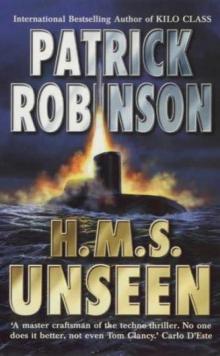 H.M.S. Unseen am-3
H.M.S. Unseen am-3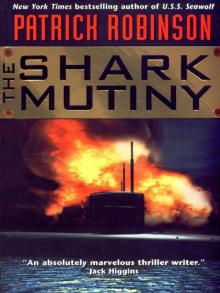 The Shark Mutiny (2001)
The Shark Mutiny (2001)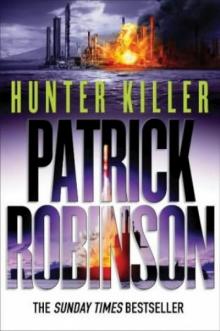 Hunter Killer am-8
Hunter Killer am-8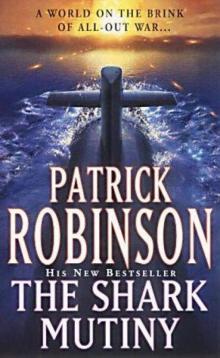 The Shark Mutiny am-5
The Shark Mutiny am-5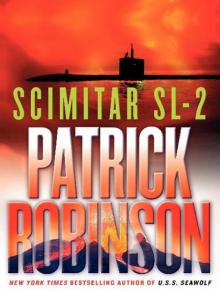 Scimitar SL-2
Scimitar SL-2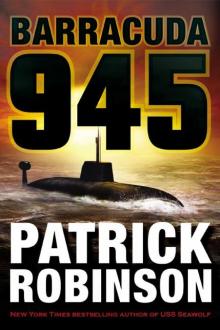 Barracuda 945 am-6
Barracuda 945 am-6 Hunter Killer
Hunter Killer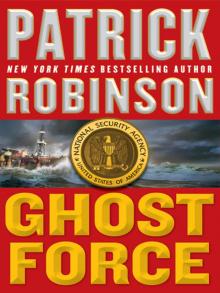 Ghost Force
Ghost Force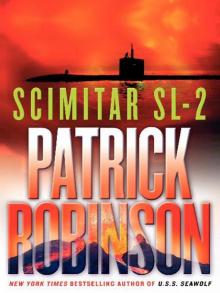 Scimitar SL-2 (2004)
Scimitar SL-2 (2004) Kilo Class am-2
Kilo Class am-2 The Lion of Sabray
The Lion of Sabray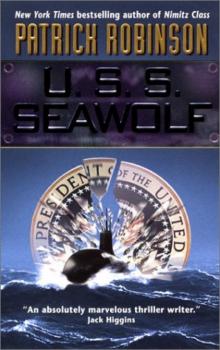 U.S.S. Seawolf am-4
U.S.S. Seawolf am-4 Ghost Force am-9
Ghost Force am-9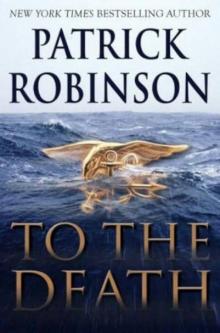 To the Death am-10
To the Death am-10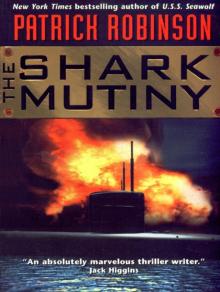 The Shark Mutiny
The Shark Mutiny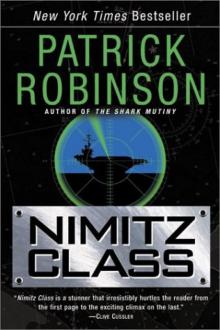 Nimitz Class am-1
Nimitz Class am-1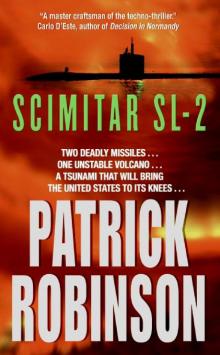 Scimitar SL-2 am-7
Scimitar SL-2 am-7 Barracuda 945
Barracuda 945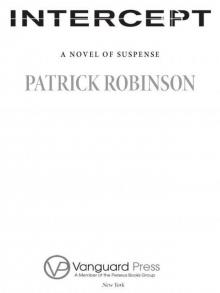 Intercept
Intercept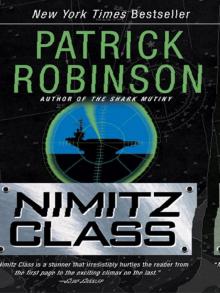 Nimitz Class (1997)
Nimitz Class (1997)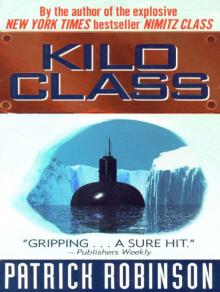 Kilo Class
Kilo Class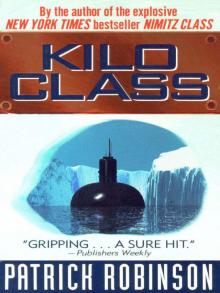 Kilo Class (1998)
Kilo Class (1998) Diamondhead
Diamondhead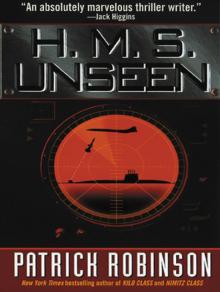 H.M.S. Unseen
H.M.S. Unseen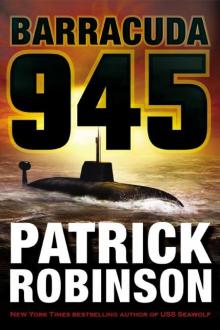 Barracuda 945 (2003)
Barracuda 945 (2003)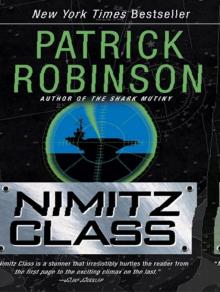 Nimitz Class
Nimitz Class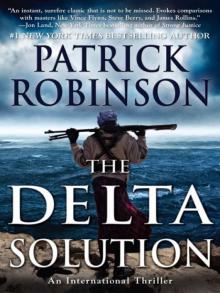 The Delta Solution
The Delta Solution U.S.S. Seawolf
U.S.S. Seawolf